To add more RAM to your PC, you must first learn how much RAM your motherboard can support – total and per slot.
The only definitive and easiest way to check how much RAM your motherboard can support is to read the spec sheet.
However, if you have a laptop, check its spec sheet to determine its RAM configuration.
In the following text, I will discuss how to check how much RAM your motherboard can support. I will also talk about other important information you must note, particularly if you are upgrading your RAM.
TABLE OF CONTENTS
How To Check How Much RAM My Motherboard Can Support?
As mentioned earlier, reading the spec sheet is the best way to check how much RAM your motherboard can support.
The motherboard’s spec sheet can highlight several aspects regarding the RAM supported:
- The total amount of RAM it can support
- The max amount of RAM per stick/slot it can support
- The type of RAM it can support
- The frequency of RAM supported
- It supports single or Multichannel memory (Dual Channel is most common).
- Whether it supports Error Correction Code (ECC) Memory (Used by Servers)
And plenty of other stuff like whether it can be overclocked, support XMP profiles, etc.
All this can only be determined conclusively by the spec sheet. Hence, this is my only recommended method.
Reading The Motherboard/PC’s Specsheet for RAM
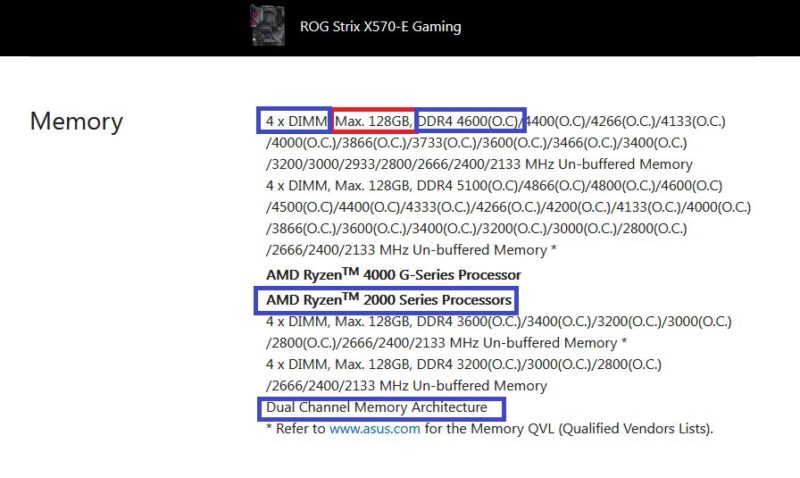
Above is the specification sheet for a high-end gaming motherboard by ASUS designed for AMD. It has the premium X570 chipset.
In the memory section of the spec sheet, there is a plethora of information that you can find regarding the RAM.
For starters, marked in RED is the maximum amount of RAM it can support, i.e., 128 GBs.
Another vital information it gives is the type of memory it supports. In the case of this motherboard, it is DDR4.
It also tells you that it has 4 x DIMM or four memory slots. Given the fact that it can support a maximum of 128 GB of RAM, we can ascertain that each slot would be able to occupy a single stick worth 32 GB each.
Additionally, you can see that if you have a newer AMD CPU, the maximum RAM frequency the motherboard can support is 4600 MHz (overclocked).
However, if you have an older 2000 series AMD CPU, the max frequency it can support is 3600 MHz (Overclocked).
Of course, for this method to work, you need to know the motherboard make and model. Otherwise, you cannot find it online if you misplaced the manual.
Also Read: How to Check RAM Model and Brand?
Figuring Out The Make and Model of your Motherboard
Again, you have to know the make and model of your motherboard to look up its specs online.
There are plenty of ways to figure this out.
1. Physically Checking the Motherboard
Regarding desktops, almost all motherboards have the motherboard make, and model labeled clearly on them.
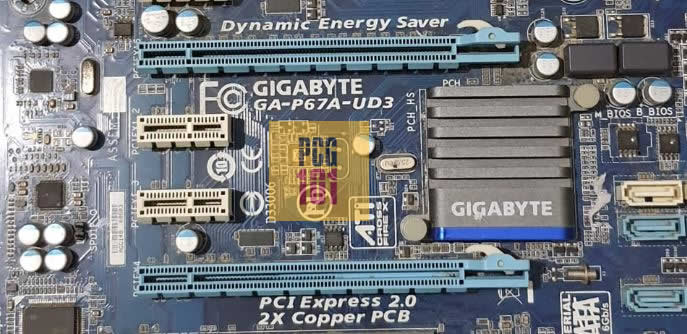
2. Using the System Information Utility
Another straightforward way is to run the System Information utility from Windows.
For this, type System Information in the search bar or type msinfo32.exe
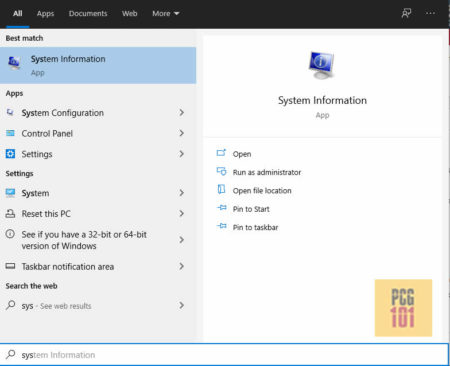
Then in the System Summary section, look for the field labeled System Manufacturer and System Model.

I am using a laptop; hence the information it shows is relevant. If you have a desktop, these two fields will show the make and model of your motherboard.
You can use that information to search it online and read its spec sheet to figure out the maximum RAM it can support.
3. Using Trusted FREE Third Party Software Such as CPU-Z
CPU-Z is one of the most popular utilities for checking your system information.
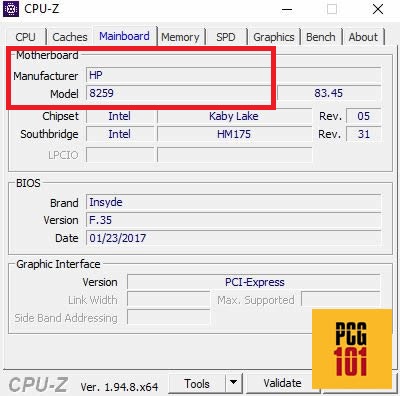
With CPU-Z open, head to the “Mainboard” tab and look for the fields named Manufacturer and Model.
This should highlight your motherboard, which can be used to look it up online for the spec sheet.
Also Read: Can You Use Laptop RAM in Desktop?
Checking the Operating System Architecture You Have
Whether you have a 32-bit or a 64-bit operating system significantly affects how much total RAM your system can have.
If you have a 32-bit operating system (x86 architecture), the maximum amount of RAM your system can support is 2^32 or 4,294.267,296 bytes of RAM (~4.0 GB of RAM), Theoretically. Practically the total amount of RAM supported is about 3,5 GB.
If you have a 64-bit operating system, the maximum RAM your system can support is 2^64 or 18,446,744,073,709,551,616 bytes of RAM (~18,446,744,073 GB of RAM)!
In other words, if you want to install more than 4 GB of RAM on your system, you must have a 64-bit operating system.
How to Check Your Operating System Architecture?
There are several easy ways to check if you have a 32-bit or 64-bit operating system installed on your PC.
Heading to your System Details is perhaps the easiest way to check your OS architecture.
To do this. Head over to the control panel -> System and Security -> System Option.
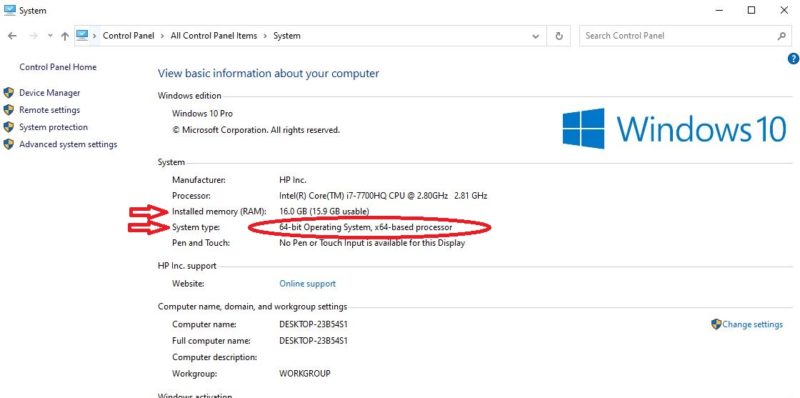
The open window would indicate both your OS’s architecture and your processor’s (x86 or x64).
There are also several other ways that you can read about in this detailed article: How to Check What is My Processor Architecture.
Also Read: Why RAM is Called Volatile Memory?
Determining the TYPE of RAM Your Motherboard Can Support
Before upgrading the RAM, it is essential to figure out which type of RAM your motherboard can support, i.e., DDR1, DDR2, DDR3, or DDR4.
Newer systems feature DDR4 RAM, and slightly older may have DDR3 RAM. Ancient and obsolete systems still feature DDR2 or DDR1 sticks.
One important point to note is that DDR RAM is NOT Cross Compatible.
A DDR4 RAM stick will not work on a motherboard designed for a DDR3 RAM stick and vice versa.
Different DDR RAM versions have a separate pin count and extra physical notches.
Desktop-Based (DIMM)
- DDR5 has 288 Pins
- DDR4 has 288 Pins
- DDR 3 has 240 Pins
Laptop-Based (SO-DIMMS)
- DDR4 has 260 pins
- DDR3 has 204 pins
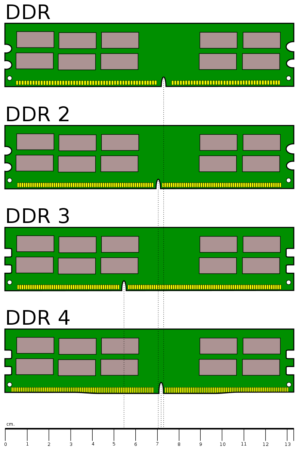
Also Read:
Checking The TOTAL RAM Capacity on a Laptop
To determine the TOTAL RAM your laptop can support, you will still need to refer to the laptop’s spec sheet. For this, you will need to select the make and model of your laptop.
The exact model of the laptop is often written or labeled on the bottom cover of the laptop.
For example, my laptop’s make is HP Omen, but its exact model is written below, i.e., HP OMEN 15ax200.
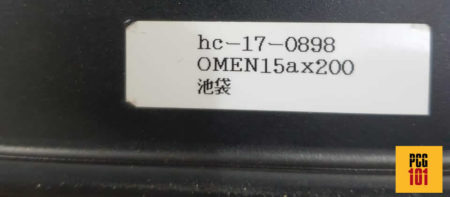
A simple search for it online can indicate the maximum memory it can support.
However, to figure out the rest of the details, i.e., the amount of RAM slots your laptop has, the type of RAM installed in your laptop, its frequency, CAS latency, etc., you can use the CPU-Z Free third-party utility.
With CPU-Z open, head over to the “Memory” tab.
Here you can find information regarding the total RAM installed and its Type, current Frequency, and CAS Latency.
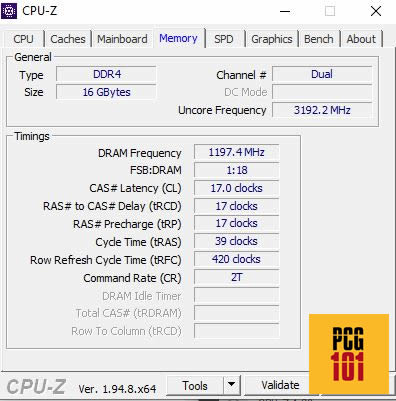
Another important TAB is the “SPD” Tab. Here you can find out the module size for each RAM stick, as well as the amount of RAM slots your laptop/motherboard has:
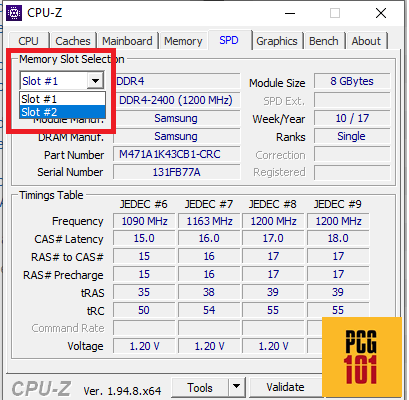
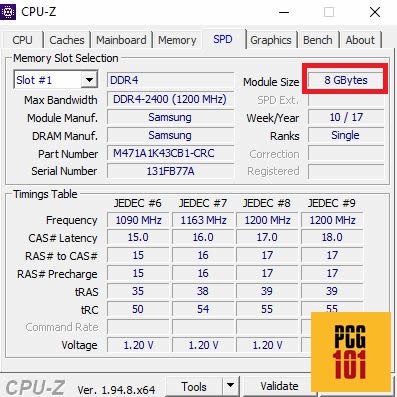
SPD TAB shows important parameters regarding your RAM sticks, including their module size, their operating voltage, their make and model, etc
Also Read: What is the Difference Between System Fan and CPU Fan?
Final Words
Here I talked in detail about how to check how much RAM your motherboard can support. The most straightforward answer to this question is to check the motherboard spec sheet online.
However, you must know and understand all the parameters, jargon, and characteristics of the RAM your motherboard supports before you decide to upgrade or install more.
FREQUENTLY ASKED QUESTIONS
1. Is there a limit to how much RAM I can install on my motherboard?
Yes, there is a limit to how much RAM you can install on your motherboard. The limit is determined by the motherboard’s specifications, including the type of RAM it supports, the number of memory slots it has, and the maximum capacity of each slot. Exceeding the limit may result in instability or system crashes.
2. What factors determine how much RAM a motherboard can support?
The amount of RAM a motherboard can support is determined by several factors, including the number of memory slots it has, the type of RAM it supports, and the maximum capacity of each slot.
The motherboard’s specifications will typically provide information on the maximum amount of RAM it can handle.
3. Does the number of RAM slots on a motherboard affect how much RAM it can support?
The number of RAM slots on a motherboard can affect how much RAM it can support. Motherboards with more RAM slots can support more RAM, provided the other specifications, such as the type of RAM and the maximum capacity of each slot, are compatible.
4. Can I install more RAM than the maximum limit specified by my motherboard manufacturer?
It is generally not recommended to install more RAM than the maximum limit specified by your motherboard manufacturer. Doing so can result in instability or system crashes. If you need more RAM, consider upgrading to a motherboard that supports a higher amount of memory.
Also Read: How to Check What Motherboard You Have?
